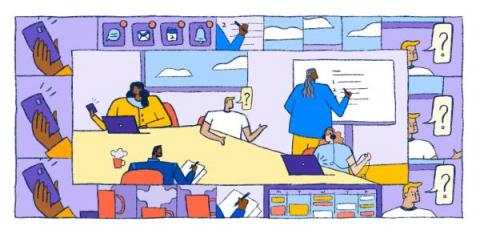Teams | Collaboration | Customer Service | Project Management
Teamwork
10 ways to create an accountable team culture with Asana
No matter where your team works, whether remotely or all together in an office, building a culture of accountability is key to hitting your goals and keeping projects on track. Teammates want to know that they can rely on each other to jump in and collaborate on projects, and managers want to know that individual contributors can meet deadlines and expectations without being micromanaged. At the heart of accountability is communication and transparency.
Putting the Team(s) back in Teamwork
We’re dotting the i’s and crossing the t’s in preparation to put the Team(s) in Teamwork in the coming weeks. Our latest feature, Teams, will allow you to group users together into teams and sub-teams so you can communicate more efficiently just like you would in real life.
How often should you really communicate with your team?
For many of us, the way we work has changed since the start of 2020. We’ve had to adapt to the unexpected, embrace remote working, and learn to keep work going even when we’re not all in the same office space. But among all the uncertainty, one thing has become clearer than ever: even when we’re apart, we’re all in this together. And teamwork has never been more important.
How to Asana: Remote work tips
10 tips for setting engineering goals from Asana Head of Engineering, Prashant Pandey
As an engineering leader, one of the greatest gifts you can give your team is clarity of purpose, plan, and responsibility. Recently, Asana Head of Engineering, Prashant Pandey sat down with Plato to discuss why clarity is so important and how it impacts goals. Here are some of his insights and advice for setting engineering goals that are transparent and empowering to team members, no matter where in the world they’re working.
4 ways cloud helps future-proof your teams
Cloud is no longer a differentiator – it’s a strategic requirement for long-term success. So says Forrester’s Benchmark Your Enterprise Cloud Adoption report, and so say our customers, 90 percent of whom choose our cloud products over hosting Server or Data Center versions on-premise (on-prem). Ten years ago, moving to the cloud was about staying ahead of the curve – no longer.
Improve workplace relationships using neuroscience
Whether you’re a software developer, a marketer, or the CEO of your own company, collaborating with people is invariably a part of your job description. Many of us have worked with people we don’t agree with or sat through meetings which could have gone better. We may have also observed minor misunderstandings between people, that could have been solved then and there, but rather linger on and have a negative impact on the relationship.
How Asana uses Asana: Managing a distributed team
Staying connected is no easy task, but during the shift to remote work team leads have had to adapt on the fly to managing distributed teams. Learn how these five Asana managers are helping their teams collaborate while working remotely.











